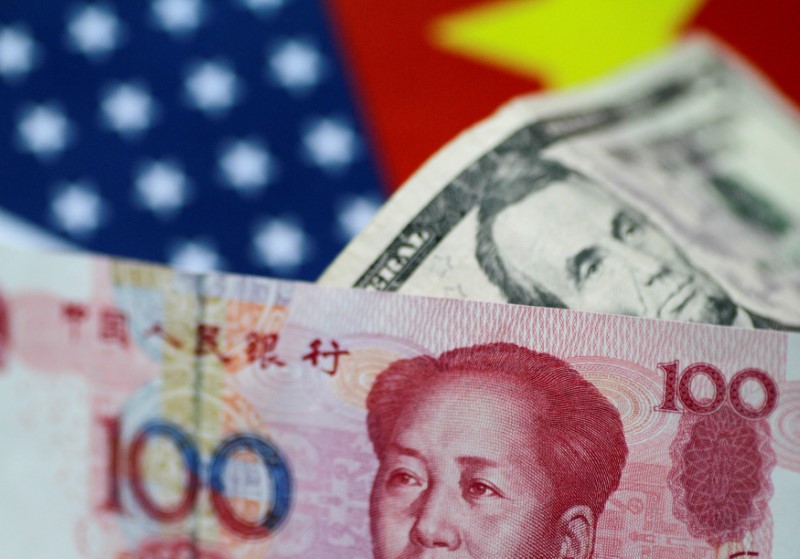U.S. inflation data ahead; Trump nominates new BLS head - what’s moving markets
Investing.com-- Most Asian currencies firmed on Thursday, while the dollar slid to a more-than three-year low as U.S. President Donald Trump kept up his calls for lower interest rates and criticized Federal Reserve Chair Jerome Powell.
A Wall Street Journal report that Trump was considering naming Powell’s successor much earlier than usual also dented the dollar, as did some bets that the Fed could next cut rates by as soon as July.
Regional risk sentiment was upbeat as a U.S.-brokered ceasefire between Israel and Iran appeared to be holding. Trump also signaled more nuclear talks with the Islamic state next week.
Dollar hits 3-yr low amid Trump rate cut calls, Powell feud
The dollar index and dollar index futures fell between 0.2% and 0.3% in Asian trade, and were at their lowest level since March 2022.
The greenback was nursing steep losses this week, as safe haven demand for the dollar was also undermined by a U.S.-brokered ceasefire between Israel and Iran, which appeared to be holding as of Thursday morning.
The dollar’s losses deepened after the WSJ reported that Trump was considering naming Powell’s successor early in a bid to undermine the Fed Chair and shift market expectations for more interest rate cuts.
The WSJ report came just hours after Trump once again lashed out against Powell while calling for more interest rate cuts. Trump had earlier this week said that U.S. rates need to be at least two to three points lower, claiming that higher rates would cause economic damage.
Powell, on the other hand, has largely maintained a cautious outlook on rate cuts, and has also warned that Trump’s tariffs present an inflationary risk that could keep the central bank from acting sooner.
Powell has also indicated that he will serve the remainder of his term, which expires in May 2026.
Asia FX strong, Chinese yuan firms on stimulus talk
Asian currencies benefited from a softer dollar, while improving risk appetite also drove some flows into regional units.
The Chinese yuan’s USDCNY pair fell 0.3%, with the yuan reaching its strongest level in seven months against the greenback.
The currency was encouraged by comments from Chinese officials that likely heralded more stimulus measures in the country. Local media reports said China’s National Development and Reform Commission will issue a new batch of consumer trade-in incentives and subsidies in July, likely offering more support for spending.
The Taiwan dollar was a standout performer on Thursday, with the USDTWD pair sliding 1%.
Other Asian currencies also advanced. The Japanese yen’s USDJPY pair fell 0.3%, with focus turning to Tokyo inflation data due on Friday.
The print is likely to factor into the Bank of Japan’s plans to raise interest rates, with a recent uptick in price pressures driving up bets that a hike was imminent.
BOJ officials also struck a hawkish tone this week.
The South Korean won’s USDKRW pair fell 0.3%, while the Australian dollar’s AUDUSD pair added 0.4%.
The Singapore dollar’s USDSGD pair fell 0.3%, while the Indian rupee’s USDINR pair fell 0.2%.
